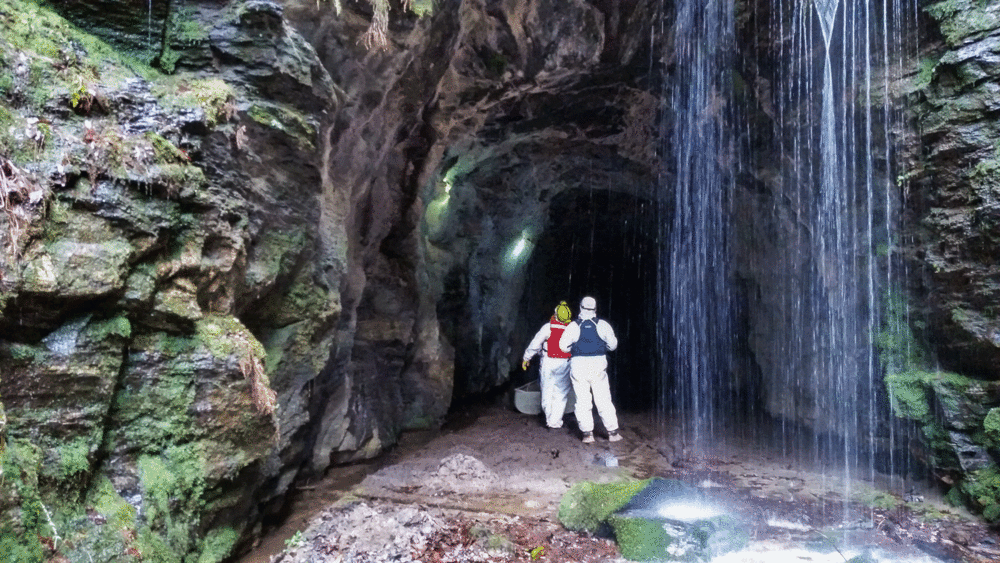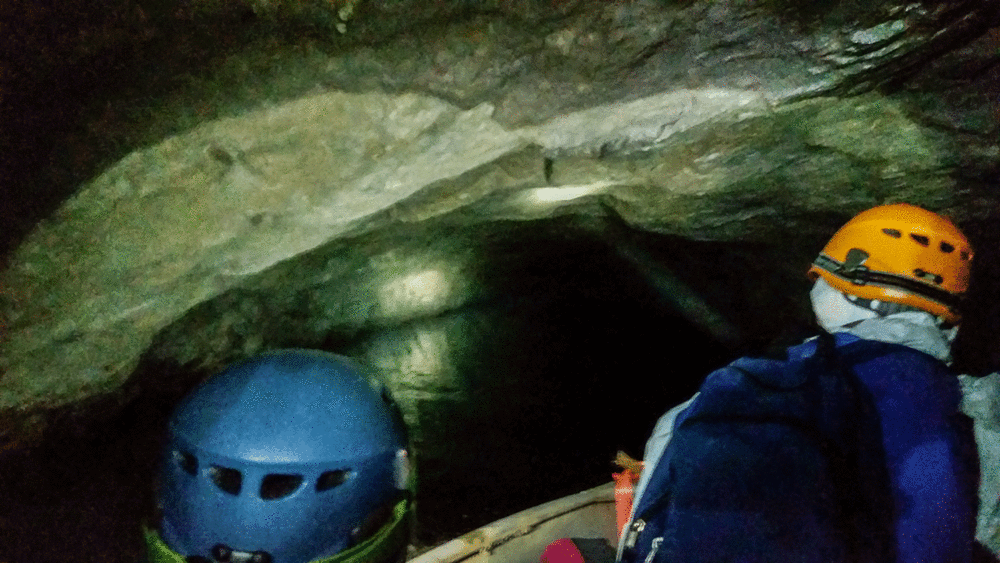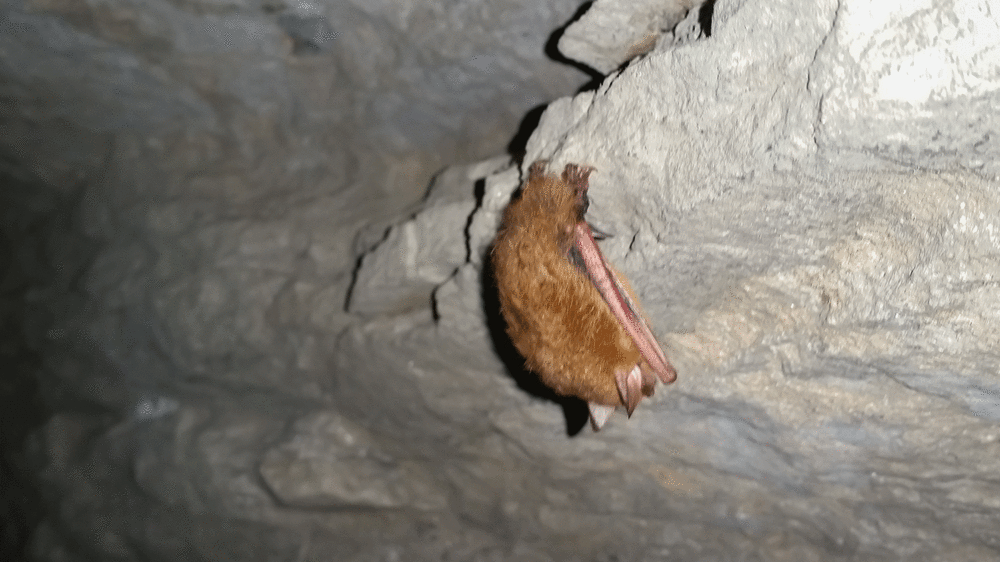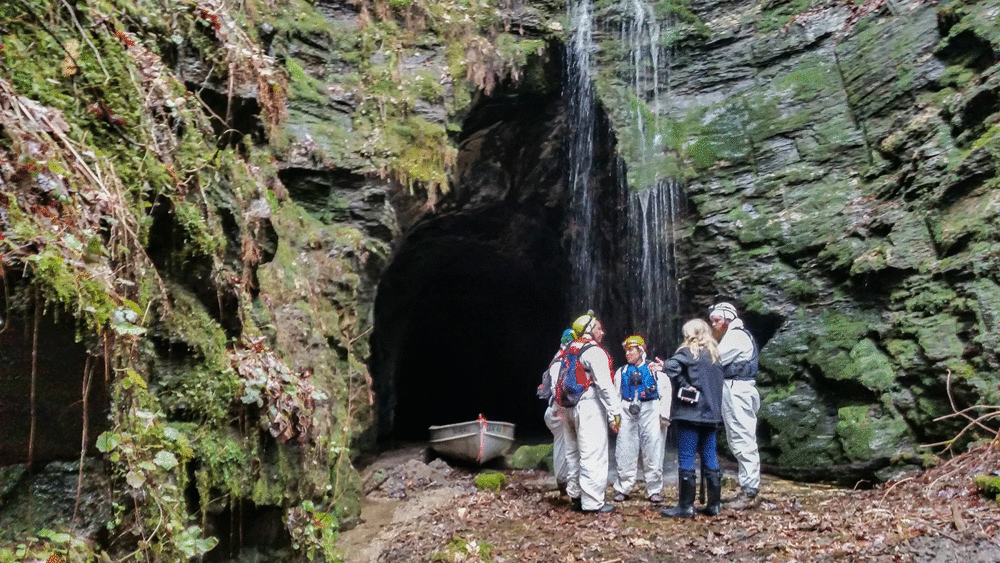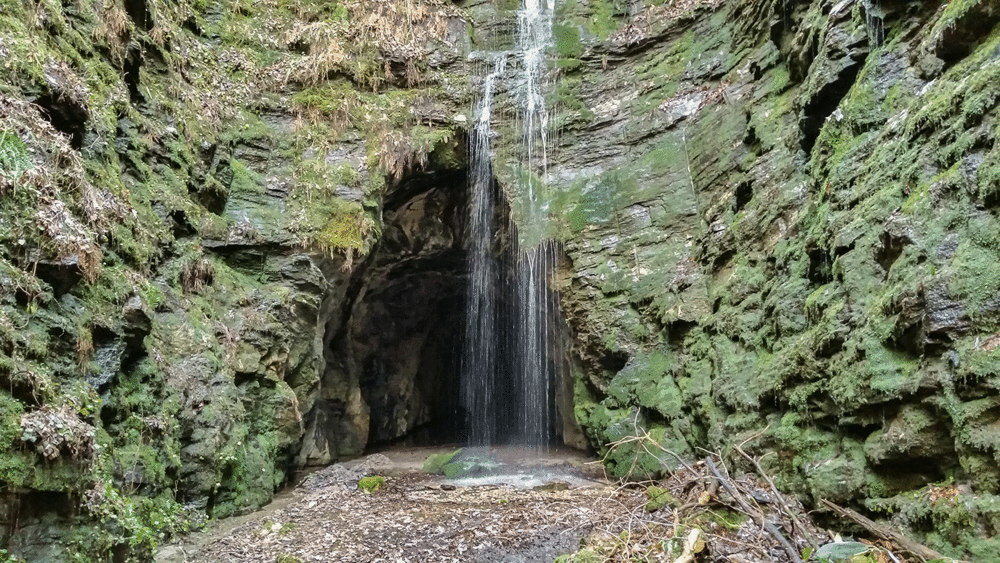Section Branding
Header Content
New White-Nose Syndrome Treatment Might Be A Boon For Bats
Primary Content
As natural predators of insects, bats are extremely important to agriculture. Researchers estimate their value to farmers in the United States is roughly $23 billion per year. But these are tough times for bats.
Since it was discovered about a decade ago, a fungal growth known as white-nose syndrome has killed more than 5.7 million bats across North America – mostly east of the Mississippi River. The population of one cave in north Georgia has declined from 5,000 bats to about 200 over the past few years.
The cave is in Clayton, Georgia, tucked away off a dirt road on private property. That’s where I met biologists Trina Morris and Pete Pattavina. Morris works with the Georgia Department of Natural Resources. Pattavina is with the US Fish and Wildlife Service. Over the last few years, Morris and Pattavina have developed a relationship with the woman who owns the land. They’re the only people she allows to visit the cave.
Nestled among acres of cornfields, the mouth of the cave, known as the Black Diamond Tunnel, is two stories high and just about as wide with a small waterfall that trickles down the right side. When we arrived, the scene was seemingly idyllic. That wasn’t the case a few years ago.
“It was not this past winter, but the winter before we saw a lot of dead bats floating on the water and they would be in different stages of decay. And so you can barely tell it’s a bat,” Morris said. “If you couldn’t see some of the wings it looks like a glob of some kind of mold and fungus. There were piles of dead bats on the little rock shelves that are in the tunnel.”
The fungus attacks bats when they’re most vulnerable – during hibernation. The fungus invades their skin and attacks their immune system. This causes them to wake up more often during the winter – using up their limited fat reserves. If a bat doesn’t die from starvation, it will die from the destruction of its wing tissue, which disrupts its water and electrolyte balance.
Pattavina says it’s difficult to contain the fungus because it produces small spores that travel easily and can live outside the cave for months. A few months ago, researchers confirmed the first known case of white-nose syndrome in the West – in a bat in Washington state.
“Either the bats move it there and we have a much larger epidemic than we’re aware of because our surveillance hasn’t picked it up in neighboring states or in neighboring Canadian provinces or it was introduced there from a really long distance event – perhaps on someone’s shoes,” Pattavina said. “We really don’t know.”
While Morris and Pattavina are tackling the fungus in the field, researchers at Georgia State University in Atlanta are busy in the lab with a promising treatment. But it didn’t start with bats. It started with bananas.
Chris Cornelison, lead researcher of the study, explained the banana to bat connection. “It was being developed to delay the ripening of human food stocks and fruits, so that you can maintain a banana at room temperature for 14 days longer without it decaying. And during some initial experiments similar to this it was observed that not only were the bananas delayed in their ripening, but also they had less mold growing on them and that’s what sparked the idea that this organism can inhibit mold growth. If you can inhibit a mold from growing on the stem of a banana maybe you can inhibit mold growing on the snout of a bat.”
Last year the GSU researchers used the bacteria that kept bananas fresh to successfully treat 75 bats for white-nose syndrome. But that was in the controlled environment of a lab. The challenge is taking the treatment into the field. They’re currently working on a modified mosquito fogger that would disperse the aerosolized compounds into the air.
“We’ve been collaborating on the development of a device that utilizes naturally occurring chemicals association with soils. They’re used in human foods as flavor enhancers, they’re used in human fragrances, so they’re broadly applied, and yet they have anti-fungal properties. These compounds can tremendously inhibit the growth of the fungus that causes white-nose syndrome and theoretically reduce the severity of white-nose syndrome. And so now we’re are working on a device to disseminate these compounds in a site where bats are hibernating.”
Morris and Pattavina plan to take the Georgia State technology into the Black Diamond Tunnel for a first treatment application this September. There’s a lot at stake. The mortality rate from white-nose syndrome is 90 percent. The population is being decimated and that puts Georgia’s agriculture industry at risk.
Morris explained, “All of our bats in Georgia eat insects. They do a lot of it. They can eat almost their entire body weight in insects in a night. And bats are out there doing a service for us even if we don’t see them, so really understanding that we’re very connected to them even if we don’t realize it.”

